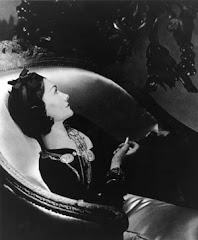
I have a piece in the Guardian today about how to make family films about the Nazi Death Camps. Or perhaps not.
This is a Hollywood version of the Holocaust, and The Boy in the Striped Pyjamas is literally a Disneyfication (you wonder whether The Gas Chamber ride is being installed outside Paris). When you make films about the Final Solution for children there's not much you can say other than to introduce the historical events in a palatable way, and to make a general lesson about being nice to other people. When The Diary of Anne Frank was adapted for the stage in the 1950s, it was with the intention of suppressing the specifically Jewish element of the story to make it "universal".

6 comments:
When you consider that most children are raised on stories by the brothers Grimm on tales that cover death and abandonment, I do not understand why the film industry needs to sugar coat any narrative from history. Children are tougher than adults and can process information without the luggage of emotional history.
I do think there is quite a difference if it's a fairy tale about abandoning children in the forest - something which probably actually happened some hundred years ago - or if you tell a story about some of the greatest horrors of mankind which actually did happen not more than sixty years ago.
Being German, I've learned about the Holocaust at home (my grandmother was 19 when the war ended) and at school and at that time they still showed the documentaries about Auschwitz. They've stopped doing that, I don't exactly no why they stopped, but the pictures burn into your brain and never let go.
I don't want to say that a sugar coat is a good thing, I don't think it's possible to sugar coat it at all. The sheer all-to-imaginable horror always seeps through.
Sadly, Americans practice the same kind of mental gymnastics when it comes to confronting the abominations of slavery.
Disney also gave a happy ending to Notre-Dame de Paris, sparing Esmeralda and Quasimodo. (who would of course also have been murdered by the Nazis in "modern times" for her "race" and his multiple disabilities, not just in the distant medieval past of the book's setting)...
phyllis, slavery, and the genocide of the Aboriginal inhabitants.
But Anastasia, unfortunately there has been a lot of Holocaust kitsch. The second half of "Life is Beautiful" in the Nazi camp didn't work at all. The first part, skewering the idiocy of "racial laws" and the rest of fascist/Nazi ideology was infinitely more effective, but I'd have left the family as they boarded the train.
Perhaps the horror of what was done by culturally advanced, modern civilisation is one of the reasons the response was first to play it down and "get on with life", later to fetishise it and sanctify the victims.
Primo Levi's memoir was famously turned down by Natalia Ginzburg (also née Levi but not a relative) at the Einaudi publishing house after the war. Ginzburg's own husband Leone Ginzburg had been tortured to death by the Gestapo for the double crime in Nazi/fascist eyes of being a capopartigiano and a Jew.
And the other great Jewish-Turinese writer Carlo Levi, who actually returned to occupied Florence to work for a clandestine newspaper (though he was aware he could face Ginzburg's fate) wrote "Crist Stopped at Eboli", about fascism, the underdevelopment of the Italian south, and mass economic exile - but there is not a single Jewish reference in that book, although the only other Jewish character in the book, his sister visiting from Turin, was rather emblematic of modern, intellectual Jewish womanhood as an urban physician.
As long as I've been working on my memoir (about growing up in isolation with a Holocaust Survivor father and a mother whose brothers were Nazi collaborators, hear, hear, I finally share this on a public forum) I've been told by well meaning listeners to generalize my story. Huh? No wonder it's taken me a life time to get where I'm at now, finally close to finishing my manuscript.
As for saving children from learning in too harsh a way about the monstrous reality, Hamida Bosmajian covers the lot in her scholarly and hefty publication "Spare the Child: Grief and the Unspeakable in Youth Literature".
I have just found time to sit down quietly to read your article. It is interesting that someone somewhere has decided on how children should be made to learn of this monstrous chapter in recent history. Both my husband and I were raised on the stories of our parents' experiences of WW2 in different parts of mainland Europe. Neither my mother nor my father-in-law spared us any of the horrors.
Now our children have heard these stories from us, backed up by DVDs of every documentary we can find. I see no reason to invent a story to give children a narrative.
(Incidentally my Polish father-in-law who was not Jewish but suffered considerably in the hands of the Nazis was very impressed with the realistic portrayal of the concentration camps in the film Sophie's Choice.)
Just as I would never go to see the film of The Kite Runner, so I would not bother to see this film. It is my way of showing respect for the many humans who have suffered in these two horrific chapters in history.
Post a Comment